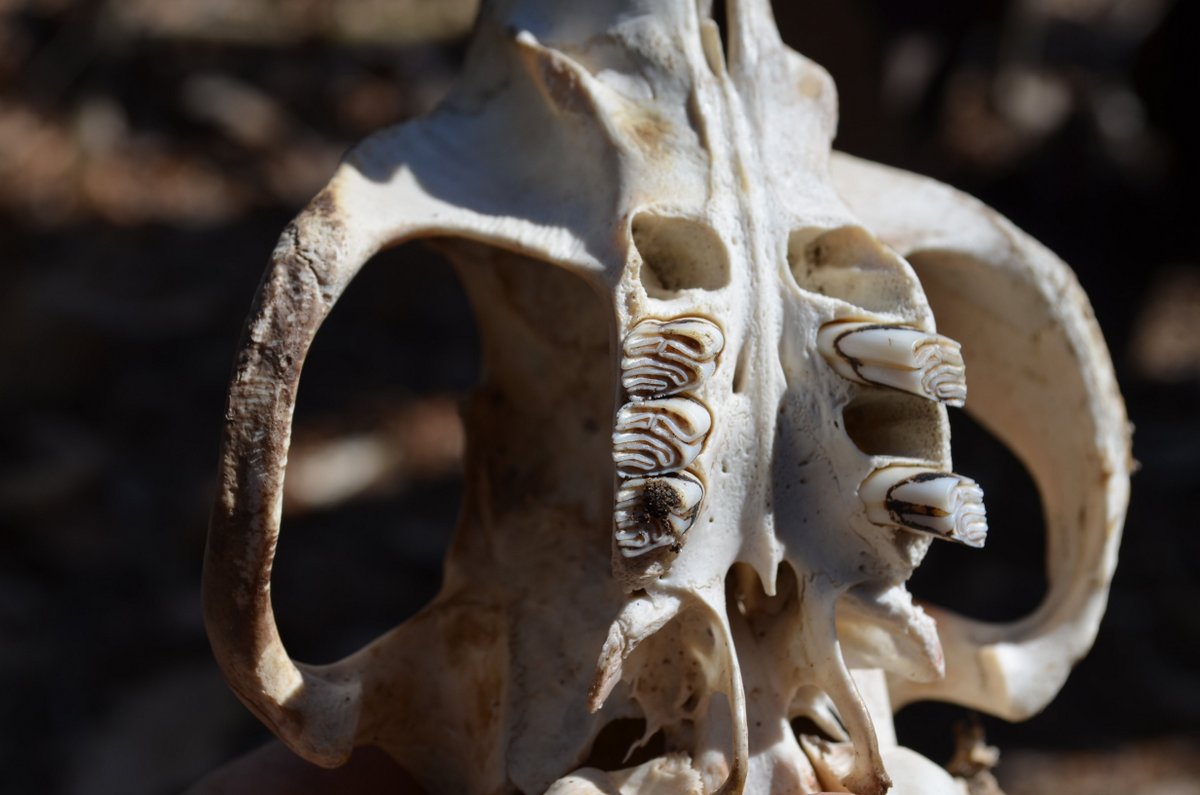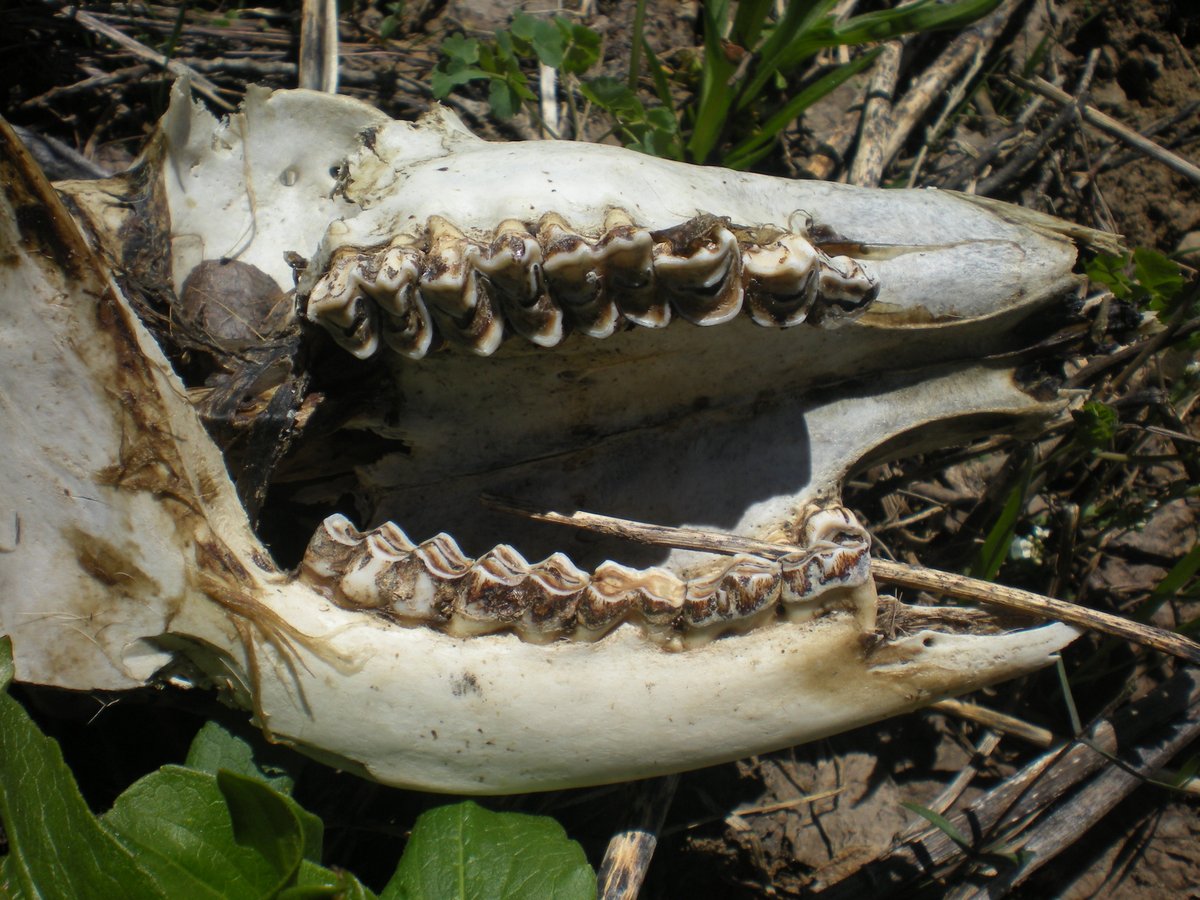Mammal Skulls
But the teeth – I was always drawn to the teeth. Mammal teeth are special in a bunch of ways, but two stand out. First, we have different types of teeth (incisors, canines, pre-molars, and molars) that are modified for specific functions (compare to the hundreds of nearly identical teeth that line a shark’s mouth, and bizarrely their skin as well: source). Second, mammalian teeth are deciduous, but finite. We have milk teeth, which are replaced once by our adult teeth (molars can be differentiated from premolars as they are not replaced and only develop in the adult set).
Incisors
My favorite group of skulls belongs to my favorite mammalian order: the rodents. Rodents as a group are highly specialized for chewing through really, really tough things (rodent means gnaw). The most immediate and obvious feature on a rodent skull is those big bright orange incisors. Unlike most mammalian teeth, these incisors grow continually throughout the rodents life. In the image of the beaver skull below, I’ve pulled out one of the incisors to show its true length.
Unlike our teeth, which are covered in an incredibly strong layer of enamel, only the front surface of a rodent’s incisor is coated in enamel. The enamel is reinforced with iron (hence the orange color), which makes it both resistant to wear and tear from gnawing, but also more resistant to decay from acids (source). When the chisel like teeth chew open walnuts, grind down electrical wires, or fell trees, the much softer white dentine layer (the section behind the enamel) is ground down quicker than the enamel. This wear pattern maintains a sharp chisel surface over the life of the rodent.

A beaver’s incisor grows, on average, about 6 feet over it’s 10 years of hard living (source)!! Upper incisors tend to grow faster and more irregularly than the lower incisors. Growth rate of a beavers incisors in much slower in the late summer and early fall, presumably as the animal invests more energy in adding fat deposits (lower incisors are only weakly seasonal). You can see the growth patterns (rapid growth followed by slow growth) in the tooth when cut in longitudinal section (cut from the root to the tip). In one cool application, researchers are looking at longitudinal sections from fossil rodent incisors to determine the season in which the animal died. Very cool stuff (source).

Molars
The molars – in terms of wear – are much the same as the incisors and similar to the molars of many unrelated species of herbivores (e.g. deer, rabbits, cows) where the sharp ridges of enamel are interlaced with exposed layers of softer dentine. Different families (e.g. beavers vs mice vs deer) have different zigs/zags to the enamel ridges. The incisors are used to chisel away are trees and twigs and then the small chunks of woody material are passed back to the molars to be ground down into a pulpy mush. Having ridged molars increases the capacity for the beaver (or whatever other herbivore) to grind down their food into smaller parts that are easier to digest. As with the incisors, the dentine wears down faster than the enamel and so the ridges remain sharp peaks for much longer. After years of grinding down wood, the enamel ridges slowly wear away and the teeth become less and less efficient at pre-digesting food, which decreases the overall efficiency of the animal in turning plant matter into biomass (see image below of an older mule deer’s teeth).





